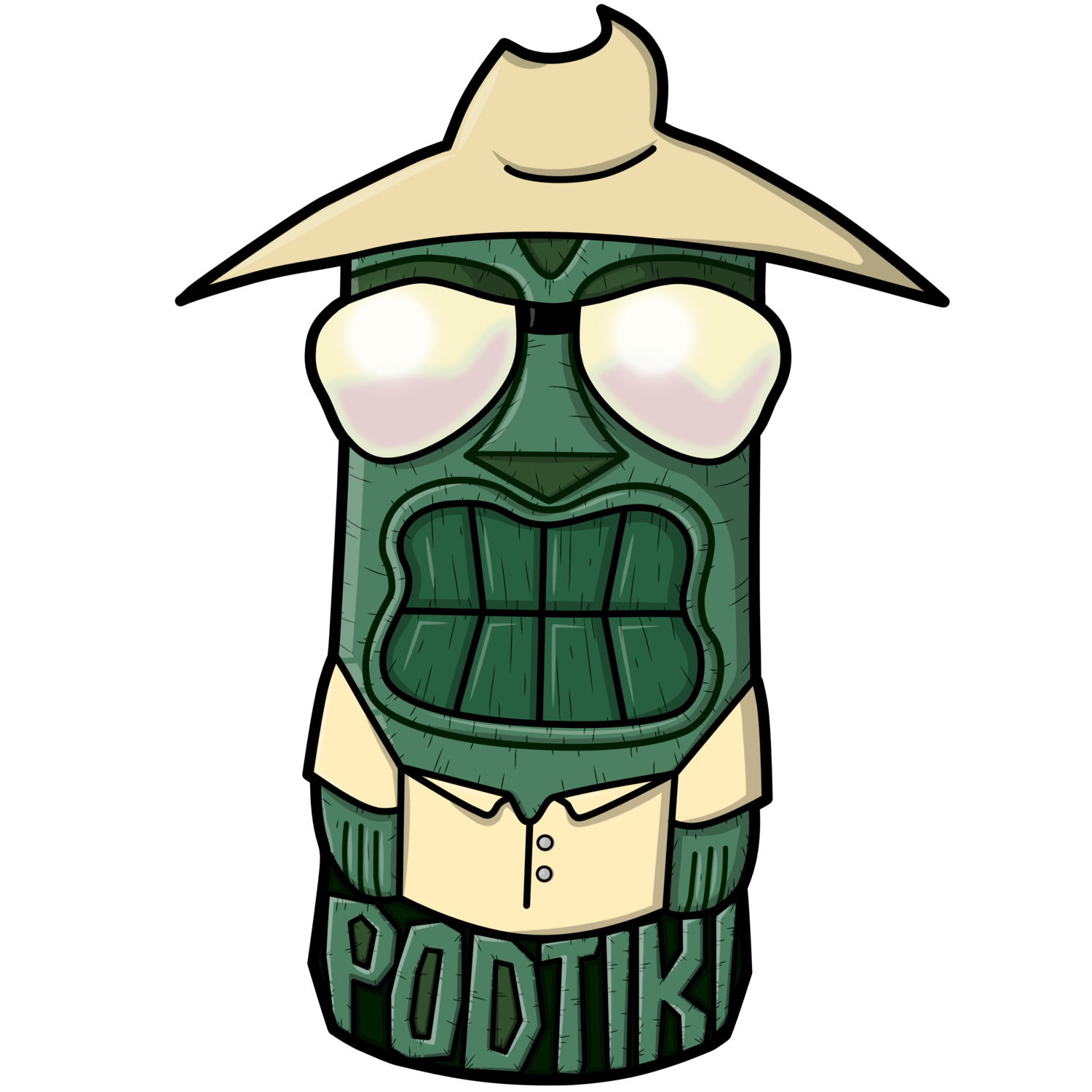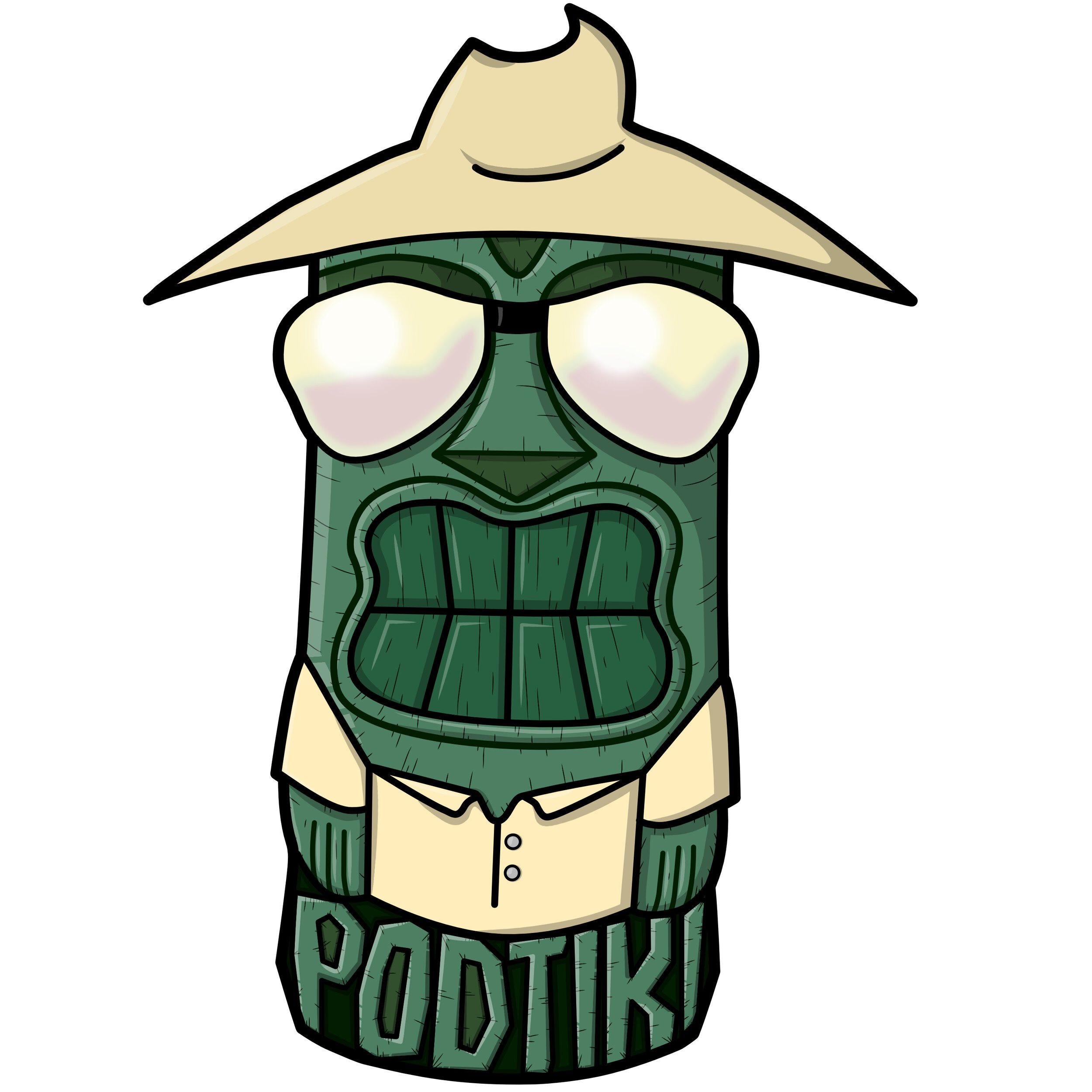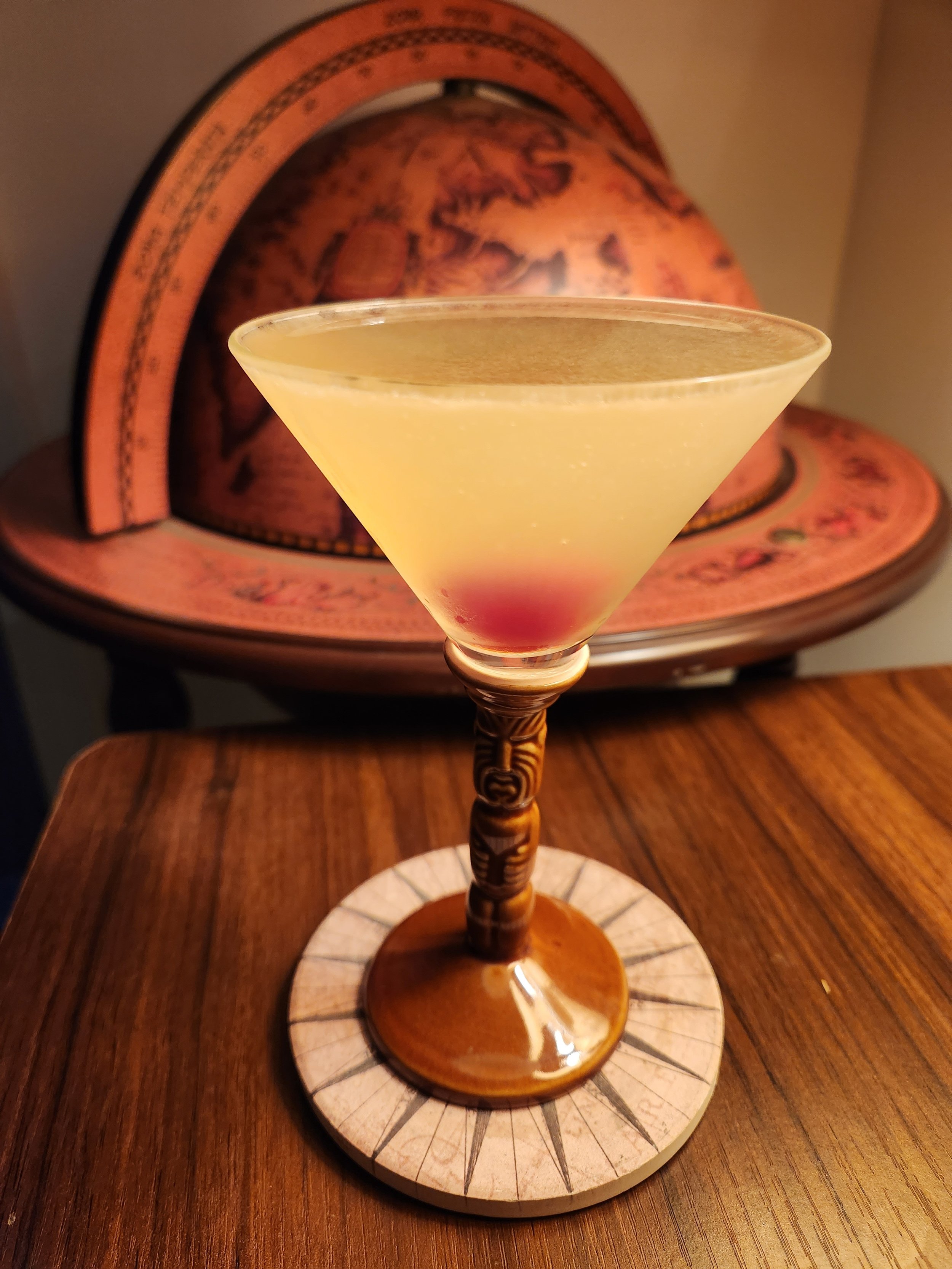I sit here at my writing desk in quite a quixotic fugue. Tender as my sensibilities are presently, I will attempt to gather what wits remain. That is, if any wits I possessed in the first place. The curious conte I am about to relay may seem based in fiction and purely intended for entertainment. Though, I assure you, the missive laid out before me I pen as a cautionary tale.
Most tales tend to start at the beginning. It makes sense to start at the beginning, as that’s where most things begin. But how we arrived embroiled in the terrible trappings of which we find ourselves that fateful morning is inconsequential. So, by any case of substantial shenanigans, we will begin our tale… right…here.
I woke up in a foggy daze. The room was dark save a perilous light creeping around thick dark window shades. Around one of my legs was wrapped a portion of soft cotton sheet and a comforter covered the bottom half of my body. It was quite cold. Not so much a bone crackling chill as a welcomed refreshment against my sweat speckled skin. Presently, I came to the realization I was reasonably nude. The door to my bedroom was closed, so there was no danger of exposing the bits and pieces of a healthy 30 yr old bachelor. Finding some garments I made surreptitiously for to open the door.
Before me the scenario should have been cause for at least a moment of shock, yet for some ineffable and unjust reason all I could do was stare at the ghastly scene with the wonder of a child - when the callow misunderstanding of new experience is simultaneously frightening and exhilarating.
I stepped over the bodies. A bibulous lot, strewn about the floor and dripping from furniture like so many Dali clock-faces. A motionless groan emanated from one of the wretched souls decorating my small living space. Perhaps it came from all of them. Perhaps none of them. Perhaps this was indeed an inner groan produced by my very own psyche - a result of diluted consciousness.
Notwithstanding, I pressed on towards the cookery gathering myself while I gathered ingredients to resurrect the gathered ghouls of this garish gathering. My rattling caused the corpses to stir, groggily at first, one - another - then another, till eventually the whole mangled menagerie was writhing in discontent.
What transpired next was a grave miscalculation on my part and brings us to the admonishing portion of our narrative within such I render said admonishing with a tender air of contrition. For, in an attempt to mollify my tremulous tormentors, I mixed up a potion indelibly delicate with which to revive these corpses to a state of conscious conviviality. Within the hour this lascivious lot of loungers was all a’dither in raucous revels.
The misadventure spanned the entire morning, engulfed the afternoon, and stretched well into another debaucherous night. By the time the engagement had run its course and the hoard had dispersed I found myself devoid of any sense of reality. A gruesome cavorting that led only to the forsaking of a full day therefore leaving my very same body inevitably inept.
The next thing I knew that same perilous light of morning clawed its way around the dark curtains of my chambers. The fog had subsided. The air was warm and inviting. Thrusting myself into the room previously occupied by such rioting revelors I found naught but a spinning fan and a waxless candle jar spiriting the final wisps of white smoke into an atmosphere of tranquility. This was indeed the Lord’s day. I had lost the entirety of a full 24 hours. Flashes of memory appeared and vanished like drunken brilliance. I was safe now, but the iniquity of that day ever haunts my regard. All because I had the audacity to try my hand as a corpse reviver.
Ladies and gentlemen, my name is Tony, and this is Pod Tiki.
The Corpse Reviver, although sharing a cognomen theme with Zombies and Suffering Bastards, is not a Tiki drink at all, but a classic pre-prohibition cocktail going all the way back to the sporting age and the invention of the cocktail as we know it. There is another Venn diagram where these three drinks intersect as well. They are all part of a category - the hangover cure.
In the early days of the American cocktail a Corpse Reviver was not a drink, but a group of drinks also known as “eye-openers” or “hair of the dog”. Before Donn Beach and Joe Scialom leveled up the classification with Zombies and Bastards, respectively, every bartender from San Francisco to Manhattan had their own high-gravity remedy meant to jolt the life back into the droopy-eyed drunkenstein with elbows on the bar and head in hand. We’re talking about a period in American drinking habits that make a long weekend in Vegas look like dinner at grandma’s house. That is, unless you’re from a family like mine in which grandma’s usually the first one to break out the margaritas.
In the late 19th and early 20th centuries a class of mostly men known as the Sporting Fraternity took tippling to the next level. These folks were an affluent, decorous group with proclivities towards horse racing, gambling, fast company and faster cocktails. Champagne with breakfast. Beer at lunch. A cocktail to perk up the afternoon. Perhaps another before dinner. Wine with food. Manhattans and Martinis well into the evening. One could see how a lifestyle such as this may require a little morning medicine, referred to as taking one’s bitters. This ribald retinue will eventually become the roaring crowd of the 1920’s where cocaine would do the job. But before we collectively agreed as a country that drugs were the answer, we simply relied on more alcohol.
Though the “cocktail” itself is a truly American invention the Corpse Reviver found its way into history from England. The first print mention of a Corpse Reviver dates way back to an English magazine in 1861. The first written recipe appears ten years later, 1871, in The Gentleman's Table Guide by E. Ricket and C. Thomas. However, the man who made it famous was Harry Craddock working out of the Savoy Hotel in London, circa 1920’s - 30’s. In 1930 Harry published the now infamous Savoy Cocktail Book wherein he gave 2 recipes - Corpse Reviver no.1 and no.2.
The no. 1 consisted of a heady blend of Cognac, Calvados, and sweet vermouth, but walk in a modern speakeasy and order a Corpse Reviver and you’re most likely going to get a relative rendition of the no.2 - gin, orange liqueur, Lillet Blanc, lemon juice, and a dash of absinthe. Not only does that ingredient list read medicinal, just add some eye of newt and any self respecting snake oil peddler would surely have this in their cart, but it actually renders a delicious cocktail too.
As it should. There is a tendency to look back on this era of mixology like early hominids learning how to use sharp rocks to shred meat off gazelle bones. In actuality, much like classical music, the creators of these drinks are responsible for highly delicate and intricate medleys that are not only works of art in their own right but have become the reference points for over a century of cocktalia.
Harry Craddock came from that class of the first celebrity bartenders, much like his American contemporary, the godfather of mixology, Jerry Thomas. He came to the United States for his bartending education in 1897, where he worked at Cleveland's Hollenden Hotel and New York's Knickerbocker Hotel. Like a lot of promethean mixologists he fled the U.S. to escape prohibition in 1920 settling in London subsequently taking the helm at the American Bar of the Savoy Hotel. Craddock did much in his life to promote the art of mixology including founding the United Kingdom Bartenders’ Guild, and his Savoy Cocktail Book is still revered as one of the essential recipe guides studied by modern mixologists professional and passionado alike. Harry Craddock lived all the way till 1963 when sadly, despite his contribution to his craft, he was buried in a pauper’s grave. By all accounts his corpse had no desire to be revived. Harry didn’t invent the category of Corpse Reviver, but it is his recipe that bears the name and legacy today.
Not as popular as its prohibition era cousins the Corpse Reviver has experienced a revival of its own as a member of a recherche group of classical cocktails. Just be sure to heed Harry’s warning that, “Four of these taken in quick succession will unrevive the corpse again.”
Then again, we of the Tiki are not known for heeding warnings when it comes to imbibing. Let’s make a drink!
One of the things that makes a Corpse Reviver special, in my humble opinion, but an opinion formulated equidistant between personal experience and professional commentary, is that all of the ingredients are perfectly balanced to render what may be one of the rare perfect cocktails. One of which is truly greater than the sum of its parts. One of which rings harmonious like a musical chord. The individual ingredients dovetail so nicely that it’s almost as if they’re not separate parts, but a seamless monolithic indulgence.
We luck out here in that rare case in which there’s very little discord, if any, regarding ingredients. We have Harry’s recipe spelled out in detail right there in his book. A refreshing change from the inherent mystery built into the fabric of Tiki.
We start with some London Dry gin. For Martinis I usually go with Bombay Sapphire, but in a mixer with other heavier ingredients I use Beefeater. I think it pushes those botanicals to the forefront a bit more. It’s really based on individual taste as long as we stay in the London Dry category. In the days this drink was created American tipplers favored Holland gin, or Genever. This heavier, more grainy, malty gin was lighter on the floral notes and actually worked to make gin versions of early Cognac and Bourbon drinks. Harry Craddock may have used Holland gin while cutting his teeth in the U.S., but by the time he created the Corpse Reviver #2 he was back in England and using the more-popular-by-then London Dry style.
Next he calls specifically for Cointreau. I’ve seen modern recipes simplify that to any orange liqueur, and I must admit as I become more experienced I’m beginning to think they’re all pretty similar, but alas I stuck with Cointreau. Personally, triple sec does seem to have a bit more sweet orange flavor than say, a bitter Curacao. Besides, I didn’t want to mess up the color of the drink by using a colored liqueur. The only caveat would be the Corpse Reviver # Blue. This parody was created by Jacob Briars, then brand ambassador for Bacardi, as a joke poking fun at all the neon colored night club drinks of the 1980’s & 90’s. Somehow, it stuck. Nostalgia is all the rage these days, so I wouldn’t be surprised to see some glowing drinks back in the clubs. To make the # Blue simply swap the triple sec for blue curacao.
Now, this is my first time using this next ingredient. Lillet Blanc. Lillet is a French aperitif wine liqueur that comes in white and red varieties, but this is no vermouth. Lillet Blanc has the buttery characteristic of a fine Chardonnay. It’s really quite good as a dessert wine and it adds a bit of sweetness to the drink by way of rich creamy notes.
Which is just what is needed to offset the fresh lemon juice. As with all citrus for cocktails please use fresh squeezed. That is, if the lemons will still fit in your juicer. Holy crap! Have you seen the unnatural size of lemons lately?! That is not what lemons are supposed to look like. If you’re ever looking for proof our food is being tampered with just look at the size of lemons.
The final ingredient is Absinthe. Okay, this is where I’m going to ruffle some feathers. I love absinthe. I became a true fan a few years ago when my wife and I began frequenting a local French bar. I love the lore and legend of the green fairy inspiring so many great artistic minds. It’s the sort of folly chasing death that makes for great romanticism. I just wish I could buy into it.
It’s like this. We all know what gives absinthe its reputation is the mythical wormwood. The psychoactive ingredient in wormwood is a compound called thujone. In 1912 the U.S. banned absinthe for this reason. Ironically cocaine was still being prescribed by doctors. But, of course, when you tell Americans we can’t have something we just want it more. So modern science did a deep dive on the mythos of absinthe. The Tax and Trade Bureau, the agency which regulates dangerous spirits, considers a spirit with amounts less than ten parts per million to be thujone free. Well, according to cocktail historian Ted Haigh, both mint-condition pre-ban absinthe and modern absinthe recipes contain less thujone than the amount needed to even register. In fact, a cup of sage tea contains roughly 80 milligrams of thujone. Therefore, if this is true, unfortunately, the science does not back up absinthe having any psychoactive effects at all, besides a high alcohol content and a delicious flavor that lends itself to overindulgence. I’m not going to sit here and say I don’t feel a bit trippy when I drink absinthe. Especially if it’s the only alcohol I’ve had and I’ve had a few and it’s late and I’m feeling particularly haughty.
Here’s the part where some people will disagree - I taste no difference between an absinthe and Pernod. I think Pernod is delectable and should stop being referred to as an alternative. In finer quality absinthes there is a certain tongue-coating pastis creaminess that comes from wormwood, but then again I get almost the same sensation from any anise based spirit. So, I’m not really sure that wormwood adds anything save posterity.
Nonetheless, to stay true to Harry’s recipe I used Absente brand absinthe for my Corpse Revivers, and for the numerous late night pours of absinthe I imbibed in trying to catch the muse credited to so many green fairies.
There’s one more thing we need to cover. Harry Craddock’s original recipe calls for equal parts gin, Lillet, Cointreau, and lemon juice with a dash of absinthe. Reflecting back on David Wondrich’s book Imbibe! I recall learning that a lot of the sugar and citrus in the early golden age of cocktails was open to interpretation. Indeed, while researching this episode I came across a few expert mixologists taking liberties with the lemon juice. A full measure of citrus in a Corpse Reviver makes it into a sour cocktail. It tastes just like a lemon daiquiri. All of the abstract nuance of the blend gets lost. It’s more than likely that the spirits and liqueurs used in Harry’s day would have been much stronger, or at least potent. It’s also very true that our preferences as drinkers change throughout the decades. Libations were much sweeter back then. Going back to the days of navy grog the purpose of adding sugar and fruit was to cover up the liquor, not accentuate it, as in modern times.
All that to say, I believe reducing the lemon juice to ½ part renders a better balanced drink and allows the Cointreau and Lillet to really take the foreground.
So, with trepidatious reverence I give you the Corpse Reviver:
1 oz London Dry Gin
1 oz Cointreau
1 oz Lillet Blanc
½ oz Lemon Juice
1 dash (8 drops, 1 barspoon) Abinsithe
Shake all ingredients with ice and double strain into a coup or cocktail glass. Drop a stemless cherry in the bottom. Modern bartenders sometimes rinse the glass with absinthe instead of shaking it with the other ingredients, a la Sazerac, but when the man who wrote the book says shake it, you say how hard.
My first sip impression was buttery white wine shimmering with flashes of flowery botanicals. Orange comes through next accompanied by flirtatious anise. The fairy smiles, no doubt. All wrapped in a cloud of crisp, fresh lemon that is always there, yet you don’t notice till you think about it. The gin almost fades to a background component. Wow, this is a wonderful drink. And yes, it will wake the dead. It’s a stiff one for sure. For a morning after drink it’s laying down heavy night before vibes. It tastes like a Gatsby party in a glass.
Flowery bullshit aside, this really is an incredible drink. Even the finest cocktails usually play on sweet, grainy, fruity, or spicy flavors. Never have I encountered such a creamy cocktail. I know the over-use of the term “buttery” can be pretentious, but it truly is the best way to describe the way Lillet and Cointeau play with lemon and anise. Plus, zero bite. Just frightfully pleasing enjoyment.
In closing, I bid you beware. For the Corpse Reviver can create a cursed creature or bring one back to the realm of the living. Then again, one can never tell if the revived is truly alive. Heed my warning fellow followers of Dionysius. When dabbling in necromantic cocktails one must be prepared for what is awakened.
My name is Tony, and this has been Pod Tiki. Keepi Tiki!
Sources: Vintage Spirits and Forgotten Cocktails, by Ted Haigh, Imbibe!, by David Wondrich, The Enduring Legacy of the Corpse Reviver: article by Cara Strickland - talesofthecocktail.org, Diffordsguide.com, liquor.com, wikipedia


